As an Amazon Associate, I earn from qualifying purchases. In addition, I participate in several other affiliate programs that allow me to earn while I recommend products I love.
Whether you’re a Brit who is obsessed with scones already or an American still wondering how a British scone recipe differs from what we think of as scones, we’re going to dive deep into this Mary Berry scone recipe and make sure that you’re up to speed on your scone knowledge.
Scones in the UK, firstly, are different than the triangular pastries we think of as scones in the US.
British scones (what they would argue are THE scones) are shaped like what an American would think of as a biscuit, but they’re denser and not flaky and you eat them with “jam and clotted cream” instead of butter (we’ll get there later in this recipe.)
And when it comes to scones, I’m not going to pretend like I can come up with a better scone recipe than Mary Berry’s.
She is a UK baking legend, a staple figure for fans of Great British Bake Off, and has been putting out cookbooks here way before I was born.
So we’re going to go step-by-step through her recipe today, though I’ve rewritten the directions in my own words to help explain based on the photos.
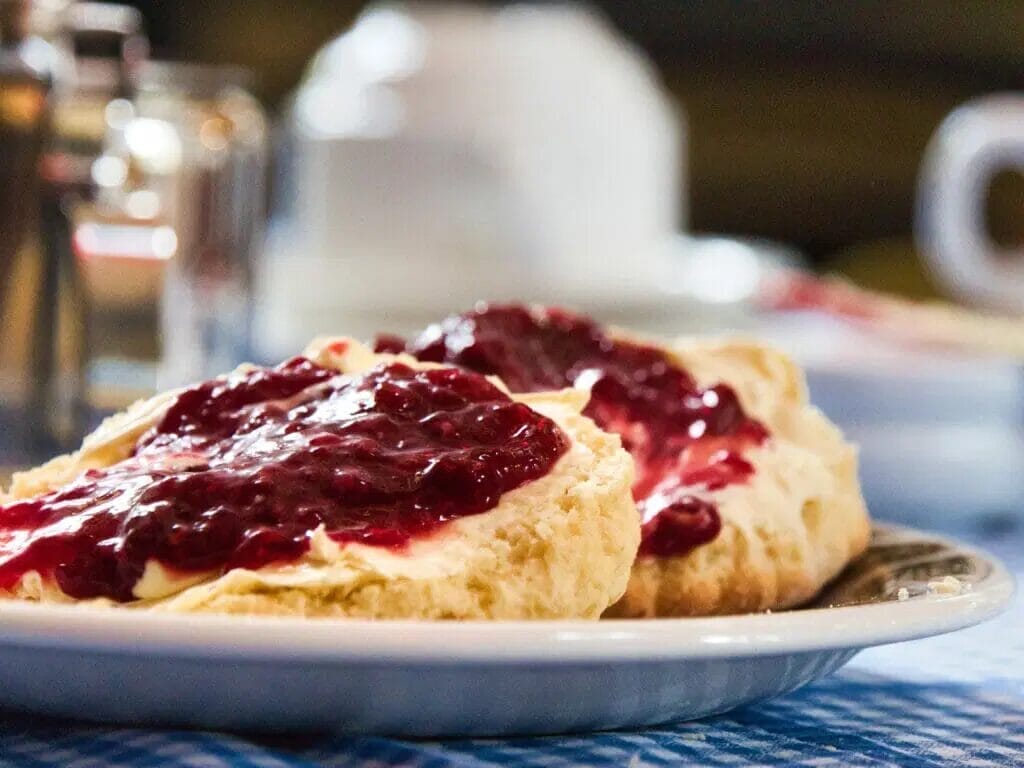
Ingredients
Scones don’t have too many ingredients, but for the actual scone itself you should gather up:
- 3 and 1/2 cups self-raising flour (450 grams)
- 2 teaspoons baking powder
- 1/2 cup caster sugar (50 grams)
- 1/2 cup unsalted butter, room temperature (100 grams)
- at least a cup of milk
- 2 eggs
and you can also mix in raisins if you want, as well as making sure you have the following for the toppings:
- jam, of any flavor of your choosing though strawberry and raspberry is very popular
- clotted cream (find it on Amazon here)
How to Make Self-Raising Flour
If you can’t find self-raising flour, you can make your own by adding baking powder.
It’s just two teaspoons of baking powder for every cup of plain flour (or 150 grams of plain flour).
This is in addition to the baking powder already in the recipe.
Can You Buy Clotted Cream in the US?
If you want authentic scones, you need authentic clotted cream!
This is not typically sold in most major US grocery stores, but most people have been able to find it at places like Whole Foods, or you can find it on Amazon.
How to Make Clotted Cream
If you still can’t find clotted cream anywhere, you can make your own!
Use a recipe like this and prepare for a significant time investment but a delicious outcome!
How to Make Scones
Okay, so let’s get started and down to the nitty gritty of how to make your British scones come to life.
First, combine the baking powder, flour, and sugar in one bowl big enough to squish your hands around in!
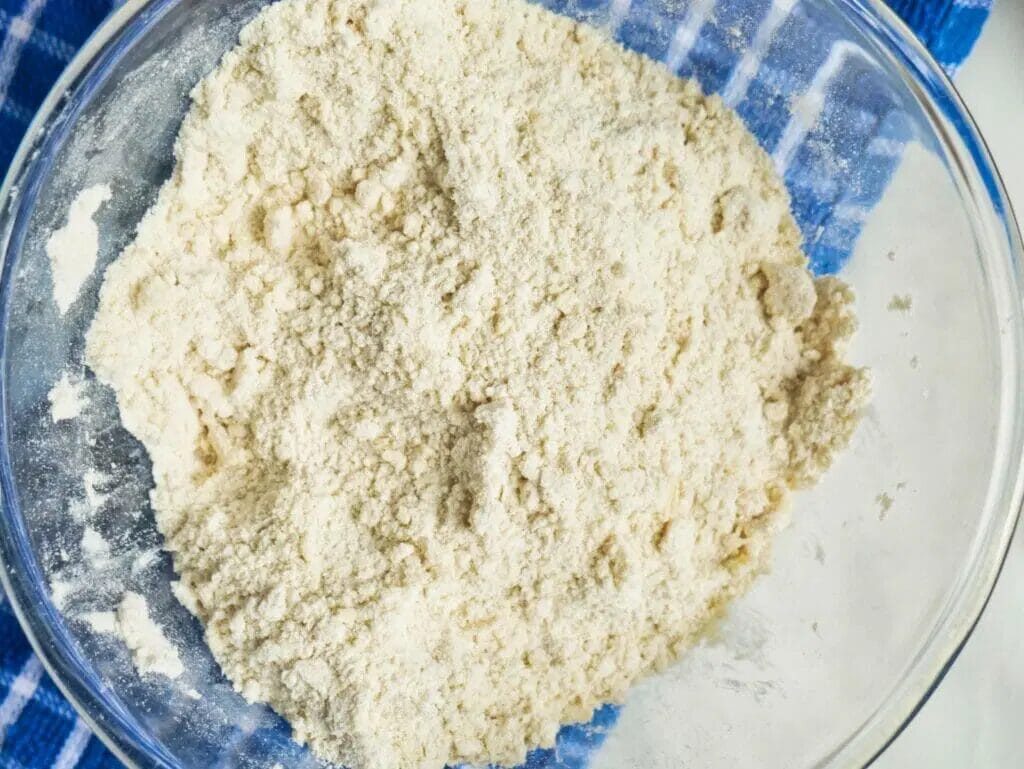
Add the butter, some people say chopped up in chunks, but I just throw it all in.
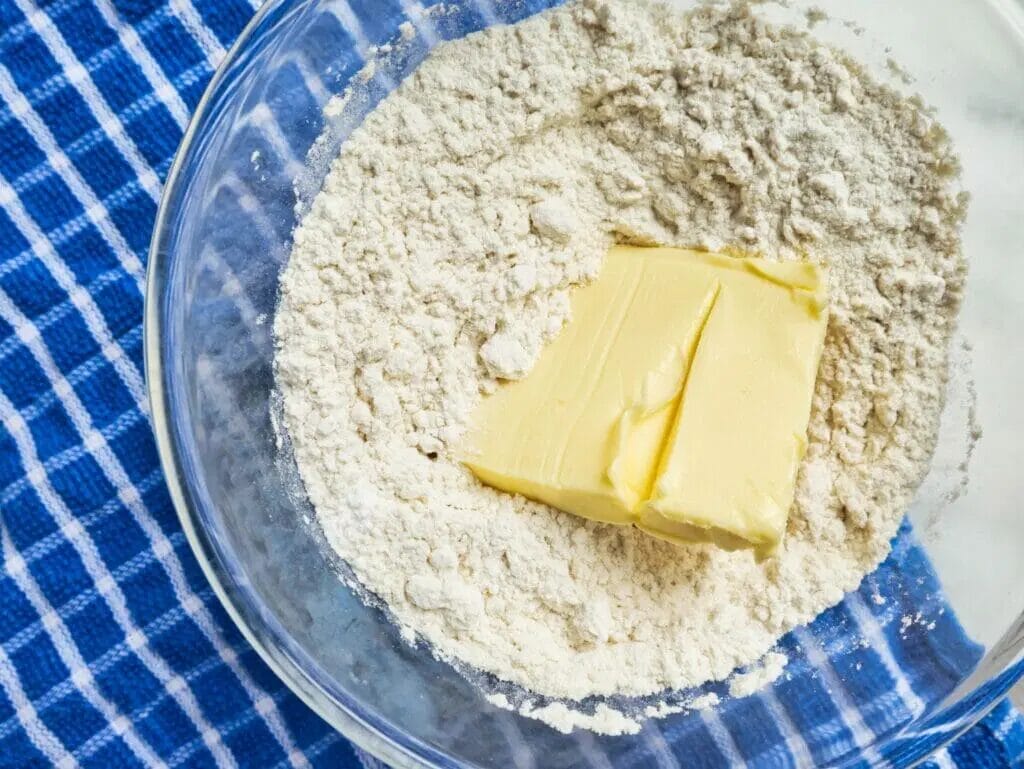
Using your fingers, combine the butter and dry ingredients by pinching it together and do what they call “rubbing it in.”
You should end up with a mix that looks like breadcrumbs.
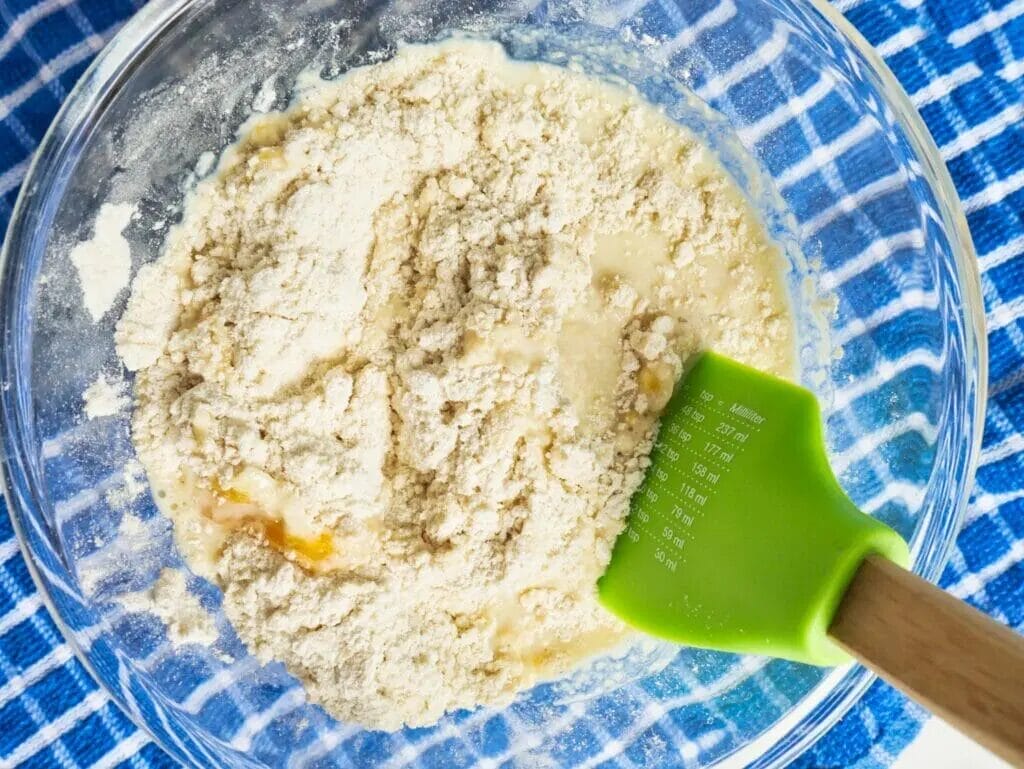
In a measuring jug, crack the eggs in.
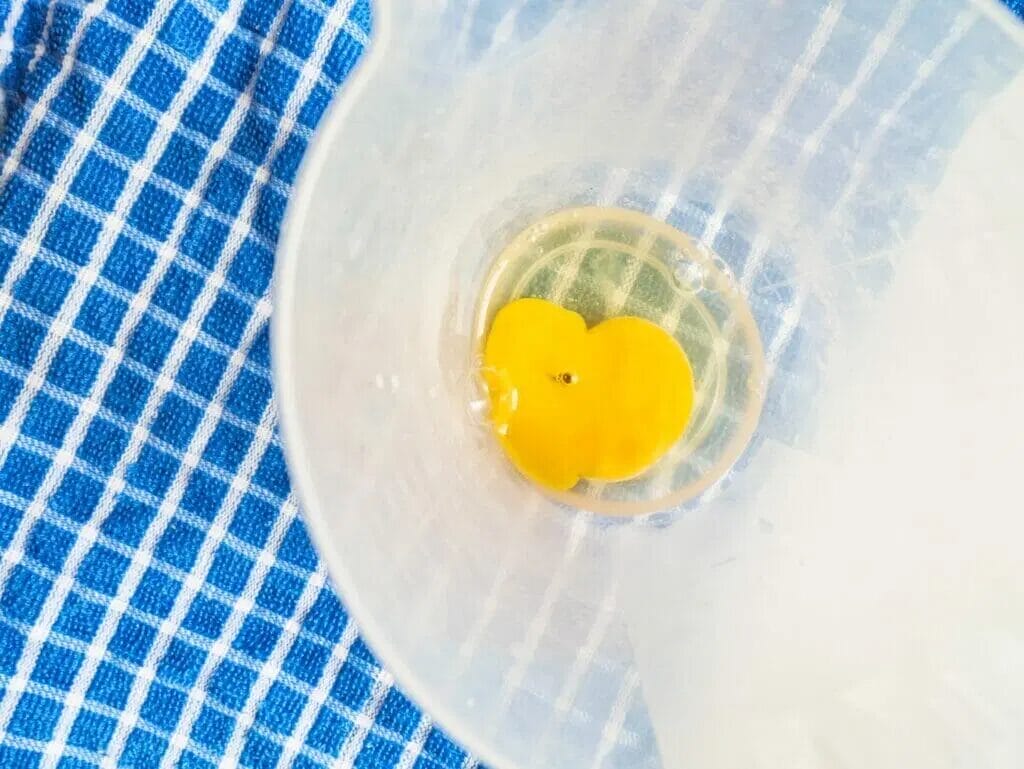
Add milk until you reach 10 fl oz (300 ml).
Mix the milk and eggs together.

Add the milk and egg mixture to the rest of the mix, slowly, and combine as you go.
Do NOT pour it all in at once.
You’re going to want leftover mixture to brush on top of the scones, and if you add it all, you may end up with a dough that is way too sticky to be worked with.
The dough is going to be stickier than you might be used to with rolled out cookie dough or other biscuits, but it should be dry enough that you can press it out and cut it out into circles.
On a floured surface, roll or press out the dough until it’s about 1/2 inch (5 centimeters).
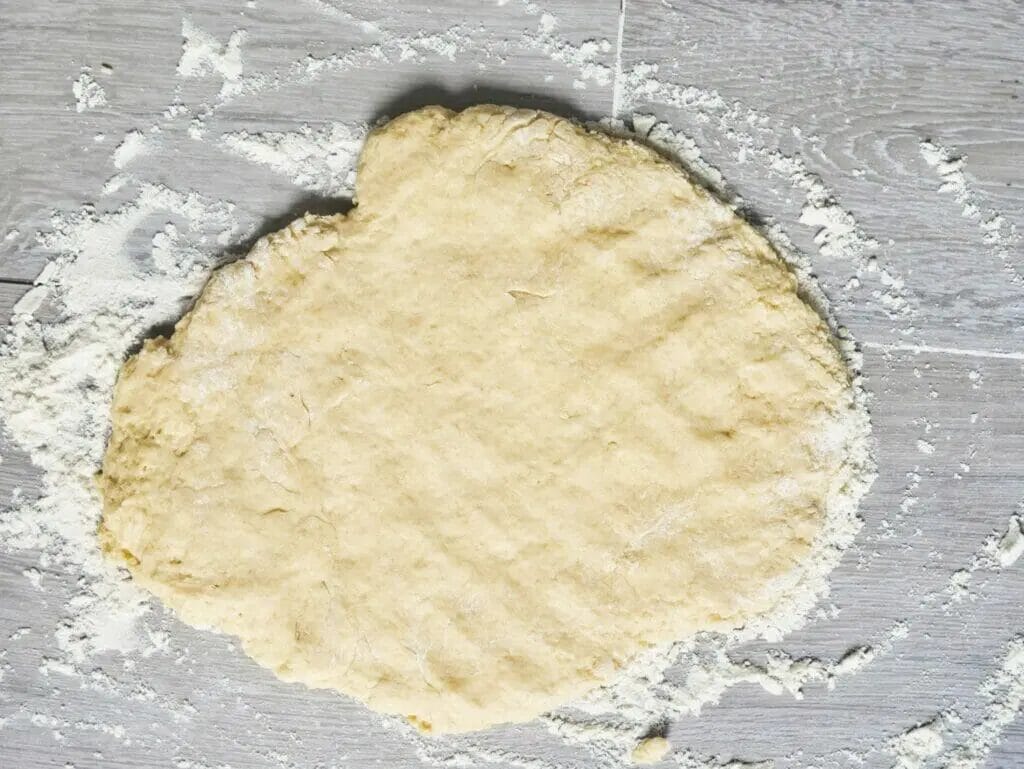
Mary Berry got all fancy and used a flutted cutter, but I used the top of a cup because this site is all about having fun baking and I totally recommend you buying a flutted cutter if that floats your boat, but some people will find it less stressful to just grab a cup from the cupboard.
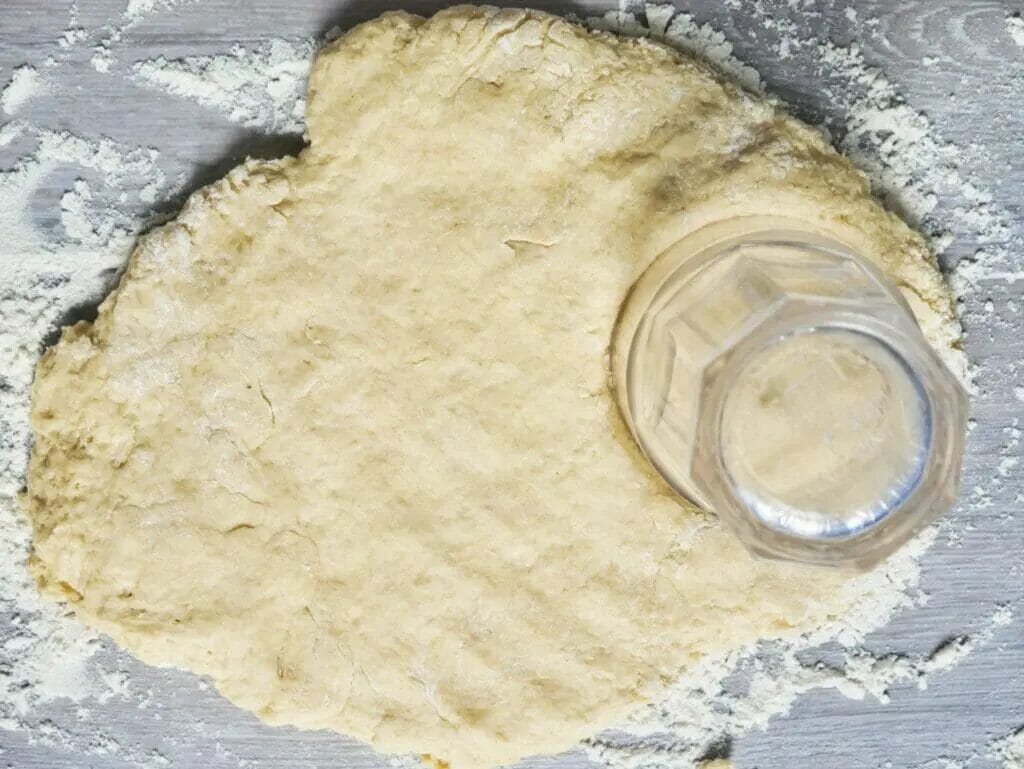
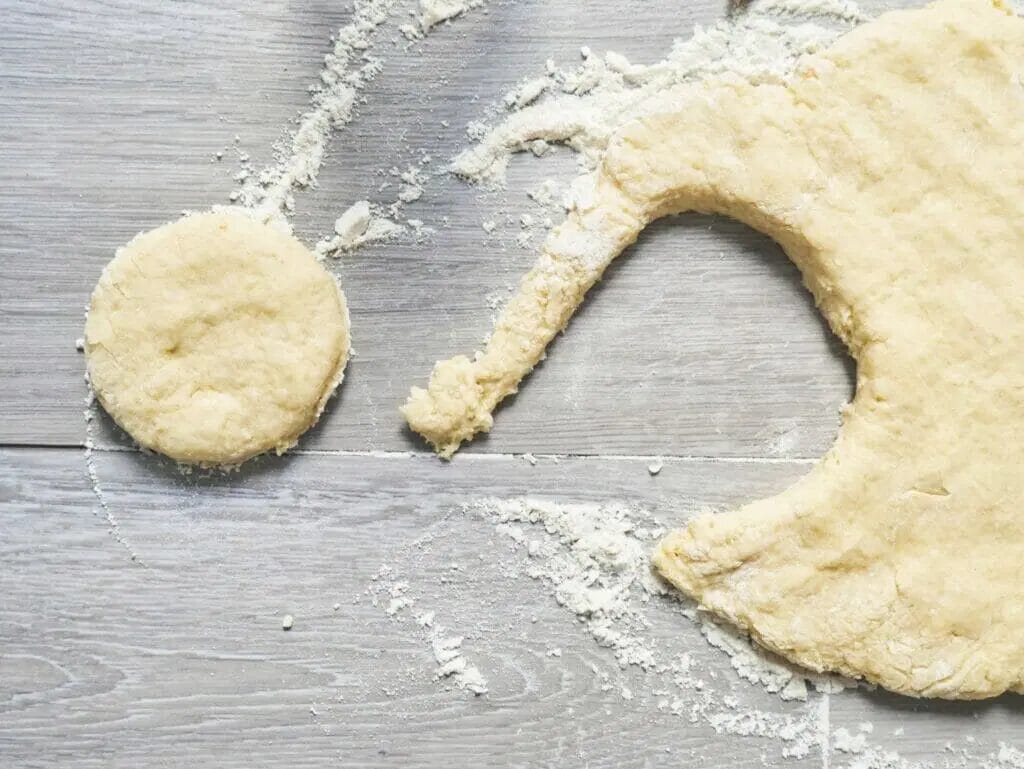
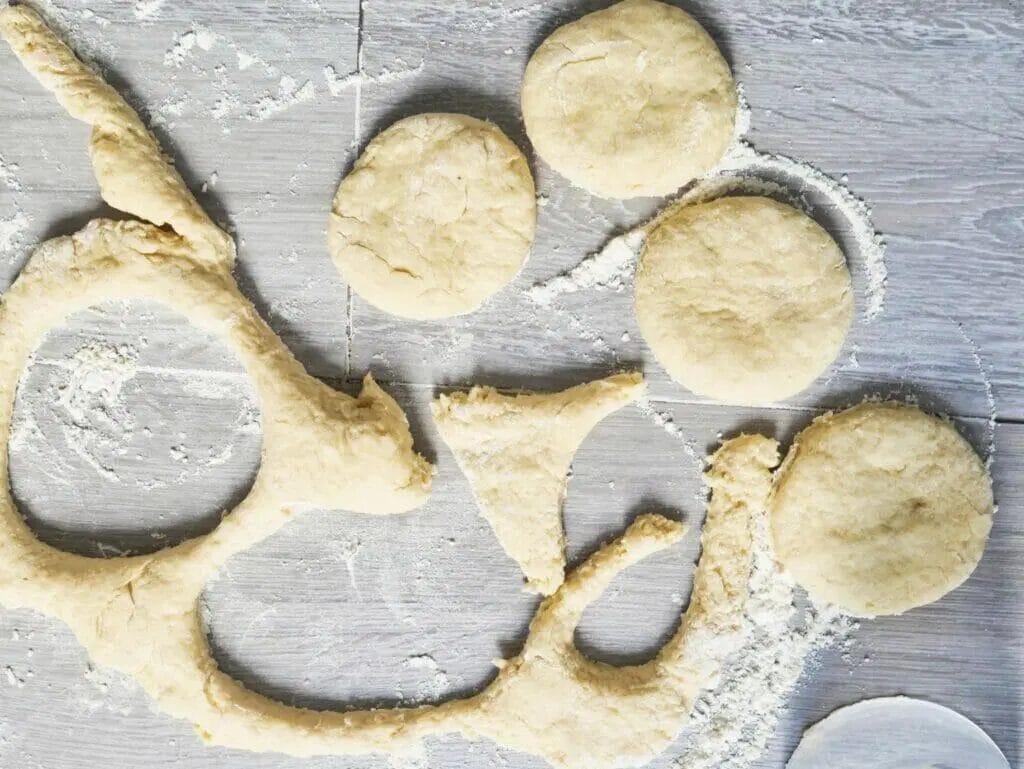
Put your cut out scones on a baking tray.
They don’t need to be really far apart, just a few inches.
Brush the tops with the leftover egg and milk mixture, either using a pastry brush or a paper towel (again, let’s get real and down to earth here!)
Bake the scones until they go golden, about 12 to 15 minutes.
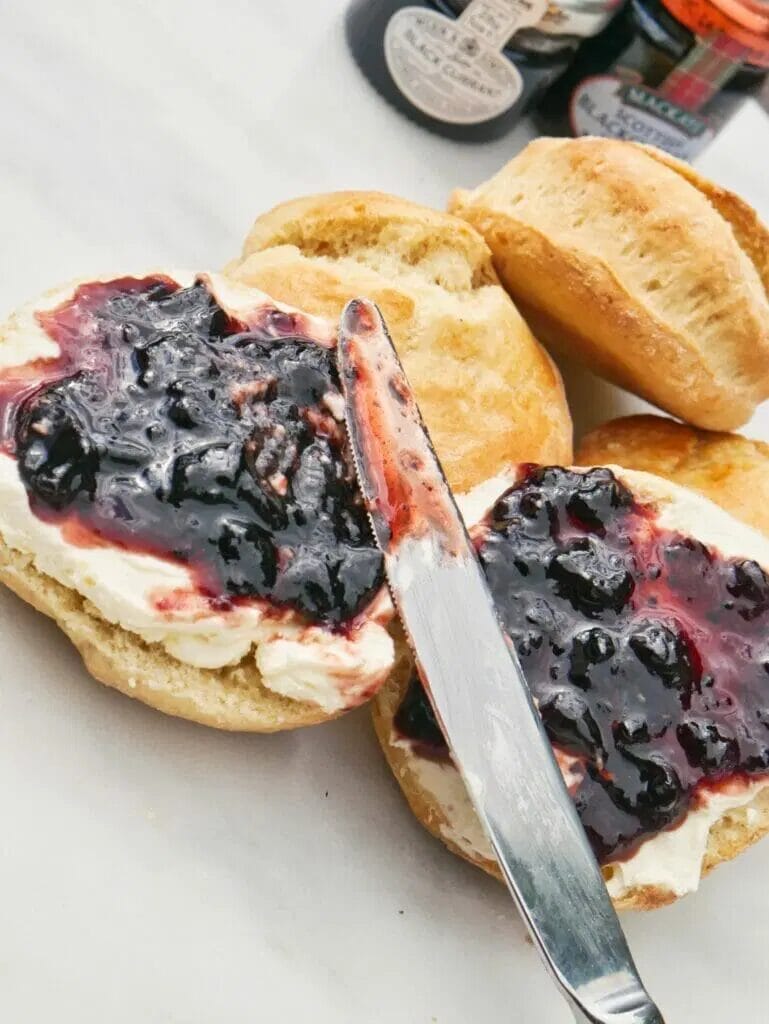
Let cool on a wire rack and then, the fun part!
Cut in half and decide which way you’re going to put the jam and clotted cream on.
Do you put the jam on first, and then the clotted cream on top, or the other way around?
Your choice!
What’s the Difference between Devonshire and Cornish Scones?
The two ways of putting jam and clotted cream on a scone each have their own names.
It’s the Devonshire way when you put the clotted cream on first and then the jam, while the Cornish way is the opposite.
Technically, the Queen serves scones at Buckingham Palace the Cornish way, but my British husband begs to differs so we’ll all just have to agree to disagree.
What to Serve with Scones
Scones are often served with, wouldn’t you know it, tea!
And not just any tea, but classic British tea like English Breakfast tea.
Other options include other small cakes and desserts, finger sandwiches, and occasionally a larger slice of cake, but never a full sandwich or anything that is going to detract from the main star!
What is the Difference between Afternoon Tea and Cream Tea?
People often get confused between “afternoon tea” and “cream tea.”
Firstly, neither of those are talking about just a cup of tea.
Cream tea is usually just scones and a cup of tea.
If you order a cream tea at a cafe, you’re not going to be given a platter of sandwiches and more full scale production.
An afternoon tea, on the other hand, is usually the works.
You’ve got your scones, your other desserts, your teas, and you’ve also got the savory sandwiches to go along with it.
Now, sometimes you’ll be given an afternoon tea menu and you’ll see an option to just have the sweet bits without the savory sandwiches and they’ll still call it afternoon tea, but this is a basic guide for when you’re traveling in the UK or hosting your own party.
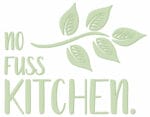
When cutting out,make sure you do not twist the cutter,just press straight through the dough and also ensure that when using the egg/milk wash,that it remains on the top and not down the sides. This gives an even rise.